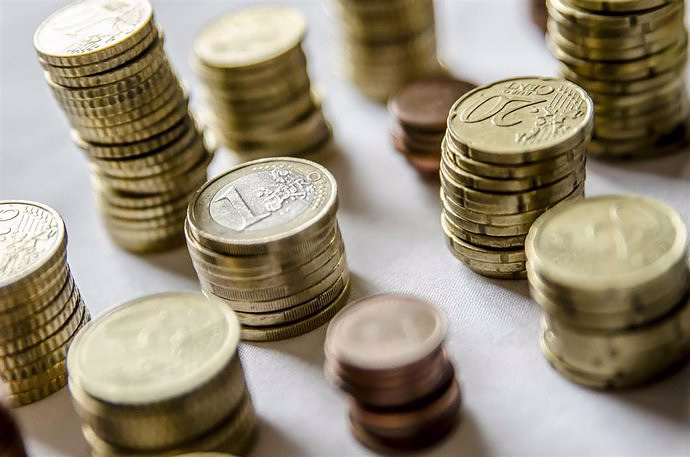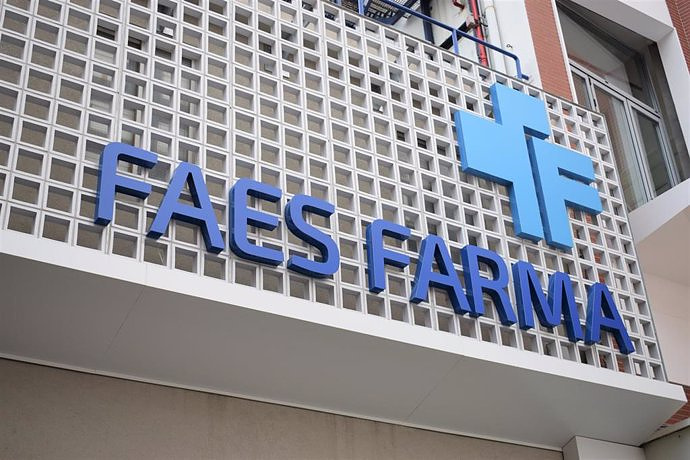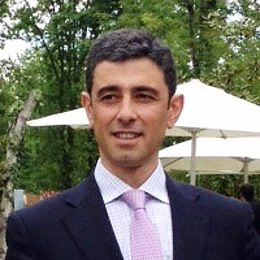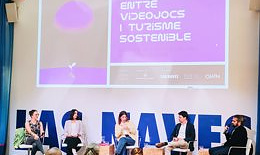During heated debates about data ownership, privacy, and monetization of personal information, there are a specific set of data that is more personal than all the others: the human set of chromosomes.
While our genetic basic structures of various species are 99.9 percent identical to each other, contain the missing 0.1% various code variations, which influence our predisposition to certain diseases, and even our Temperament - a Blueprint of how vulnerable we are for everything from heart willingness and anxiety disorders to Alzheimer's to jealousy, risk.
The year 2018, has pointed out to us various examples of how bad actors, even with the use of trivial data and indescribable Chaos can do. For all who care about the protection of this critical form of Identity, could the Blockchain is a hopeful and powerful Alternative to the nefarious use of closed architectures on genomic data, market - by technology instead provides a safe and open Protocol for our life code.
Encrypted Chainsfor The first Time, the human chromosome set was broken up on a molecular level on all four of his "letters" that forms the double-stranded Helix of our DNA, 2003. The project cost just under € 3.2 billion and required 13 years of computer power. Today, the procedure costs about 860 Euro per unique genome and only takes a few days. According to estimates, it will cost soon under 90 Euro.
As genomic, data-driven medicine and personalized therapies are on the rise, it is expected that pharmaceutical and biotech companies will continue to expand the market for genomic data up to the year 2025 to 23.7 billion euros.
During a dataset from Facebook "Likes" and news feed preferences already as a gigantic, monetarisierbarer asset that lies dormant, as yet undiscovered, exponential value in the information in the genetic code, which is just waiting, with the progress of precision medicine and genetic manipulation to be released.
Within the last year, several in the USA approvals for a variety of brand-new gene therapies have been granted. One of these cells directly edited from the immune system of the patient, the Non-Hodgkin's cure the lymphoma; another deals with a rare, hereditary retinal disease, which can lead to blindness.
But here's the catch.
the potential of genetic research, a paradigm shift in modern medicine to initiate, is to use data sets, correlations between genetic variants and properties. to decoden
the 4 Bits of a living organism, must first be gigantic data sets with genomic information is generated, and the obstacles are not scientific, but also ethical, social and technological nature.
Several senior researchers on the Front line are convinced that Nakamoto has overcome this obstacle in 2008 with its white paper and the underlying technology, known as the Blockchain -.
Cointelegraph spoke with three figures of the genomic Blockchain-sphere, to find out why.
Who owns your genome? The resurrection of the wooly mammoths... and Blockchain.
For Professor George Church, a world-renowned geneticist from Harvard, are the boundaries between technologies both inside and outside of the laboratory porous. As one of the pioneers of the direct genomic sequencing in 1984, he has tried recently, the long-extinct mammoth to revive, to create virus-secured cells, and even the aging process to reverse.
Now he has introduced another ground-breaking technology in the genomics: Blockchain.
Last year Church was founded - in addition to his Harvard colleague, Dennis Grishin and Kamal Obbad - the Blockchain-Startup Nebula Genomics. Church is busy for 4 years in order to accelerate the large-scale procurement of genomic data. He had appealed to Volunteers at his non-profit Personal Genome Project (PGP) - a 'Wikipedia' from the Open-Access human genomic data. So far, he has collected 10,000 data samples.
PGP relies on people for the purpose of science is to give both your privacy and property rights. As Church said in a recent Interview, were oriented most of the volunteers either "partially altruistic", or wanted to push the research of certain diseases from personal or family reasons.
In other cases, it was reported by the cyber security expterte San Brama of DNABits Cointelegraph, it is the patients themselves who generate the data and "sick enough, all the concerns about privacy and property right to throw away":
"The very sick come in to the health system and say: "We give you everything you want, take it, sign all the papers, with the consent. Healing us and find a cure."
The challenge is to win all the others. No one knows with certainty how many people have been sequenced their genomes, but the number is estimated at around one Million.
Startups such as Nebula and DNABits suggest that, tokenized, Blockchain-enabled Ecosystems of the technological turn might be a point for Winning the masses, By the people will be given the opportunity to make their genomes of money and to sell direct access to their data to interested parties, could help the platform according to Nebula, the sequencing costs reduce to "zero" to, "or to allow the people even to a net profit".
While Nebula does not want to subsidize the Sequencing of Genomes directly, would be a Blockchain model interested buyers-for example, pharmaceutical companies - the possibility to throw in the money for the access to the sequences of someone else in the pot.
Tokenization enables flexibility and granular consent to the activation of different scenarios. How Brama suggested, could raise a data owner is also entitled to shares in the drug, which was developed on the basis of the enabled research. Or he could have his medical costs in the crypto-token refund. Contracts would be published and hashed, and with the consent of the individual on the Blockchain will be stored.
Genomic dystopiaThe Generation of data to expand and accelerate, is only part of the formula.
Nebula, recently conducted a survey where individuals were inquired of, whether you are a Sequenzierung of their genome into consideration. The results suggest that concerns about privacy and ethics outweigh not only the affordability, but also all the other factors in the shadow. In another study, with 13,000 participants, 86 percent said that concerns about the misuse of their genetic data, and over half expressed concerns about their privacy.
These concerns are not justified just in the dystopian 90s Science-Fiction movies of Hollywood - think of Gattacas Film about a future society in the Clutches of the Neo-eugenics-fever.
As Ofer Lidsky, co-founder, CEO and CTO of the Blockchain-genomics start-UPS DNAtix says:
"as soon As your DNA has been compromised, you can't change them. It is not a credit card, you cancel, and against a new exchange. Your genetic Code is for your whole life with you [...] Once it has been compromised, there is no going Back."
data are increasingly being caught, marketed and shaped even weapons. The sequencing - let alone the Parts of the genome goes a step further, what do not want a lot of risk in view of its uniqueness, Irreversibility and longevity.
DNABits Brama gave us his opinion on cyber security:
"The consequences are very hard to imagine, but in a world in which the people carrier such as viruses build up in cells spread in the body and you change... It is very scary, but a fact that actually all the building blocks are already there: genomic sequences, data, fractures, genetic manipulation. The people working to combat major health risks on the in vivo Manipulation of genes. But we should assume that any tool will eventually fall into the wrong hands."
He added, "We are talking here about the benefits for someone for just one night with GHB or any other drug", this is about to change the life of a Person forever.
In April, shortly after the Cambridge Analytica scandal, it was revealed that police detectives had a hobby-based genealogy database for fragments of individual DNAs gemint, which should help you, for over 30 years, the unsolved murder.
The law enforcement authorities is not met with resistance, as they wanted access to the centralized storage with the genetic materials that had been uploaded by an unknown Person. And while many celebrated the arrest of the Golden State killer through a tangle in the DNA, others voiced their significant concerns.
lack of transparency has effects on the forensics. And Although Bramas dystopia is probably still off in the distance, there are already concerns about genetic discrimination by employers and insurance companies - the latter is currently banned only in part by law. Grishin to handle this and noticed that in the United States, "may you be the life insurance because of their DNA is denied".
In may, the US Federal Trade Commission began an investigation of the most popular consumer genetic testing companies - including 23andMe and Ancestry.com - in terms of their policies for the handling of personal and genetic information and how that data is shared with third parties.
23andMe and Ancestry.com represent a new phenomenon of genetic tests directly to consumers, and the popularity of such services should have in the last year more than doubled.
These companies are using a simplified technique called genotyping, which identifies over 600,000 items, which are distributed in approximately equally spaced over an interval from 6.4 billion letters along an entire genome. Even if the results are limited, to reveal the results of the Tests inherent personal genetic information.
The extremely popular 23andMe genotype-Kit - radiant with the inscription "Welcome to you" is wrapped up - promises to tell people everything - from the tree structure of their ancestors up to the likelihood of insomnia. The Kit costs $ 99 USD.
This July, invested in GlaxoSmithKline (GSK), the sixth largest Pharma company in the world, with roughly 258 million euros in a 4-year Deal in order to gain access to the database of 23andMe. The company estimates that it will have approximately 112 million Euro on the sale of access rights to about a million human genotypes for an average price of 112 Euro per unit earned. In comparison, Facebook earned approximately 70,6 Euro gross of the record of a single, active user.
Fights, anonymous Blockchain systems for the genomics RevolutionIn this increasingly opaque data landscape of the genomics of private companies to monetize the genotypic data generated from their consumers, and fragment sequence data on a proprietary, centralized Silos and flip them either in the bulky legacy systems of health care facilities and research institutions or in the private possession troughs of the Biotech companies. to move
genomics on the Blockchain, would allow for the circulation that is needed to advance the research seriously, while at the same time unique personal information will be protected by the anonymous entities are stored separately from the encryption identification information. The users retain control over their data and decide exactly with whom it may be shared and for what purpose. This access, in turn, can be on an audited and constant Ledger tracked.
Grishin explained Nebulas Vision, which implies asymmetric requirements for different members of the Ecosystem. Users would be given the Option to remain anonymous, but a verified Blockchain-System with verified, validated Nodes requires data-buyers who use the network, your identity is completely transparent to disclose:
"If someone speaks to you, it should not only be an encrypted network ID, but John Smith of Johnson & Johnson, for example, works in the field of Oncology." [Nbsp]
Grishin added that Nebula has already experimented with a block stack and the Ethereum-a Blockchain, but since then, for a prototype house has not decided, as the 15-transactions-per-second is sufficient capacity of Ethereum for the planned Ecosystem.
DNABits Brama is committed to the use of an approved system and suggested the "simplest and most robust Form of Blockchain to use, for example, a Bitcoin - like network."
Blockchain against lies save"The more powerful and more capable the machine is, the use, the greater will be the surface attack."
23andMe to store 5 million genotype-customer profile, the competition, company Ancestry.com around 10 million For each profile collected approximately 300 phenotypic data points and surveys designed to find out how many cigarettes have you smoked in your life (estimated), or if you Yoga or Prozac has more help against your depression.
The phenotype is a Set of observable characteristics of an individual resulting from the interaction of its genotype with its environment. To generate this data and to share access to them is crucial for the decoding of the genome by a correlation of variants and features. But as Grishin, the quality of this is noticeable mostly self-reported data is often in doubt and tokenized genomes in this respect, faced with a major challenge:
"If people are going to be in the position to monetize their personal genomic data, then the people can imagine - as you might probably think: If I give you a rare disease, will be interested many pharmaceutical companies to buy access to my genome" - which is simply not necessarily true. The value of a genome is difficult to predict, and it is wrong to say that your genome is valuable, if you have a rare characteristic. For many studies you need a lot of control samples, which are just normal."
education can help to make people aware that you can earn with lies no more money and that a "genome of the middle class" is for a buyer just as interesting as an unusual. Grishin noted, however, that a Blockchain System can provide a unique mechanism, the fraud prevented, if education is failing:
"the Blockchain can help to create phenotypes surveys, the incorrect answers to identify or know when a participant tries to lie. This can be combined with a Blockchain-enabled Escrow System, where for example, you must Deposit before you participate in a survey, a small amount of crypto currency in an Escrow Wallet."
If there are conflicting answers indicate that someone has tried to lie about his state of health, could be held his Deposit in a Blockchain System so much easier, than in a System of Fiat currency."
2018: viruses and chromosomes meet on the BlockchainAlthough only a fraction of the total population is already flooded thanks to the data-intensity of the body's own code is already a Tsunami of sequences, the centralized shops.
The complex, raw data set of a single genome is 200 Gigabytes in size: In June, the Genbank of the US National Institute of Health contained allegedly be about two trillion Base. One of the world's largest Biotech company, China's BGI Genomics, announced in the same month to produce up to the year 2017, five Petabasen with a new DNA that will grow every year until 2020 to 100 Petabasen.
In an Interview with Cointelegraph suggested Lidsky, that is the 200 gigabytes of raw data are unimportant for analysts and stressed that the original genome sequence is read several times, "let's say, 30 to 100 Times" in order to avoid inaccuracies. Once they are combined, he says, "reduced the size of the sequence to 1.5 Gigabytes". However, a move on the Blockchain significant reductions. For comparison: the average size of a transaction on the Bitcoin Blockchain (BTC), was in the middle of June 2018 423 Kilobytes.
average transaction size announced on the Bitcoin Blockchain, 2014-18 source: TradeBlock.com
In June DNAtix the first Transfer of an entire chromosome via Blockchain technology - and more specifically on IBM Hyper Ledger Fabric. Lidsky told Cointelegraph that it of the company in August had managed to achieve a compression rate of 99% for DNA.
Nebula itself is of the opinion that the data transfer is given to the sensitivity of the genomics on the Blockchain unnecessary and not a good idea. Instead, the company is proposing to share access to the data. This solution would link the Blockchain with advanced encryption technology, and distributed computing methods. As Grishin explains:
"can be used to analyze your data locally on your Computer by simply self-an App with your data [...] with additional security measures - for example, with Homo morph encryption to share data in encrypted Form."
Grishin stated, that Homo morph techniques to encrypt data, but not in "ensure that this encryption is unnecessary ", by the "TRANS-formations to create the morph of your data, without having to bother you":
"The data buyer does not receive the actual, underlying data, but calculates the encrypted Form, in order to derive results, derive. Code is transformed, therefore, more likely to be in the data, as data to be transported to the researchers."
the Encrypted data can be made available to the developers of so-called genomic applications - something that suggest to Nebula, DNAtix and other emerging companies in the area as a way to provide users with an Interpretation of your data. This could also be an additional source of money for researchers, and other third-party developers.
But the "Outsourcing" of genomic interpretations to an App so simple? The decades-old health models prescribe patients to genetic counselors, to go through with you the risks and expectations and help them to translate, if possibly disturbing, and often-threatening results.
consumer genetic test companies have already had to contend with accusations that their clients "with each lot of data and few answers". In addition to satisfying General curiosity, and the Interpretation of a series of "Wellness"genes 23andMe can reveal whether the test person carries a genetic characteristic in which, for example, could affect the health of future children. 23andMe is also - since 2017 - authorized genetic health risks to disclose - including the risk for breast cancer and Parkinson.
If the Blockchain can do more, as individuals leave before the blue flickering screens of information, is unclear. Nebula and DNAtix superior to both, as a Form of genetic counselling in their Ecosystem can integrate and Grishin suggested that users "agree" to if you really want to "know everything", or only "actionable" results; that is, things that can be addressed with modern medicine.
Blockchain and Big PharmaThe global market for prescription-only medicines to, according to forecasts, by 2024, to 1.03 trillion. Euro growth. But to close the information gap between pharmaceutical companies and the millions of people take every day pill, remains a significant challenge.
The development of drugs depends on life-cycles of medical studies and genetic testing, prescription side effects and longer-term impacts in relation to the life-style track and correlate; token authorizations could give individuals and businesses the incentive to share the various currents obtained data. Brama said:
"life data will come from Wearables, Smartphones, Smart Homes, Smart Cities, shopping, commercial interactions, Social media, etc., Other data will be borne by us all - and that is our genome. The third clinical and health-related data generated in our health system."
Brama use the analogy of a card deck, to explain how the Blockchain could be the key to bring these three forms of data connected to each other, while at the same time, the anonymity of the data owner is maintained.
An individual can hold a limited number of unique addresses in your digital Wallet. If this Person goes to a pharmacy to a specific drug, say, Vitamin C in a packaging with QR buy Code, this generates a transaction for one of the addresses. A visit to my family doctor could cause a further Hash for a diagnosis - for example, a runny nose - in the electronic medical record (EMR). This transaction takes place between the service provider and a different Wallet address.
A user could decide now that there is a correlation between the transactions for the different Wallet on the Blockchain and make this available to the public, so that other users can cast to the underlying data of the commandments. Or he could keep the connection off-Chain and only in the network to upload, for example, if an insurance company or a research Institute that advertises to users that have a specific Set of transactions:
Biotechnological"hold the card deck. You look at your cards and decide whether you say anything or not. You can put all on the table so that everyone can see them, or you can indicate that you have certain cards in Hand. This ensures that you, the decision-making and implementation is completely up to you."
Professor Church has set up an analogy, every stop involved in the crypto and Blockchain - sphere, he says, "in this Moment, genome sequencing, such as the Internet is, at the time, in the late 1980s. It was there, but no one has used it."
the Blockchain and the vanguard of genomic research are, perhaps, closer than ever before. Now, since the DNA is understood in our cells as a life-long store of information, and the need for new and breakthrough technologies to secure the interrelated network of the body codes, and to manage in a flexible way.
The rise of genomics allows for questions that cannot be by science alone answered. For all of our interview partners Blockchain could be the key to a fair and transparent method for the Has to create the circulation of personal genomic data, all of which ensure dignity, that our Helices and the raw Biomaterial out of control.

 Exploring Cardano: Inner Workings and Advantages of this Cryptocurrency
Exploring Cardano: Inner Workings and Advantages of this Cryptocurrency Seville.- Economy.- Innova.- STSA inaugurates its new painting and sealing hangar in San Pablo, for 18 million
Seville.- Economy.- Innova.- STSA inaugurates its new painting and sealing hangar in San Pablo, for 18 million Innova.- More than 300 volunteers join the Andalucía Compromiso Digital network in one month to facilitate access to ICT
Innova.- More than 300 volunteers join the Andalucía Compromiso Digital network in one month to facilitate access to ICT Innova.-AMP.- Ayesa acquires 51% of Sadiel, which will create new technological engineering products and expand markets
Innova.-AMP.- Ayesa acquires 51% of Sadiel, which will create new technological engineering products and expand markets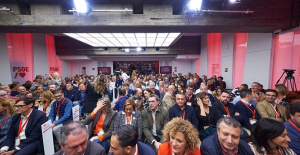 The PSOE is holding a Federal Committee this Saturday that will serve to close ranks with Sánchez so that he does not resign
The PSOE is holding a Federal Committee this Saturday that will serve to close ranks with Sánchez so that he does not resign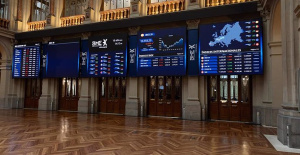 The Ibex 35 closes the week at its highest since 2015 and is already looking at 11,200
The Ibex 35 closes the week at its highest since 2015 and is already looking at 11,200 RELEASE: Dogfy Diet leads in canine nutrition with revolutionary natural solutions
RELEASE: Dogfy Diet leads in canine nutrition with revolutionary natural solutions STATEMENT: Fernando Belasteguín Curarti ambassador in China
STATEMENT: Fernando Belasteguín Curarti ambassador in China How Blockchain in being used to shape the future
How Blockchain in being used to shape the future Not just BTC and ETH: Here Are Some More Interesting Coins Worth Focusing on
Not just BTC and ETH: Here Are Some More Interesting Coins Worth Focusing on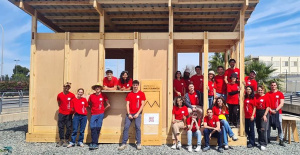 UPV students build a prototype of a wooden house to move to Equatorial Guinea
UPV students build a prototype of a wooden house to move to Equatorial Guinea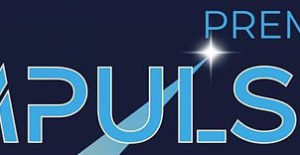 The UA opens the call for the Impulso 2024 Awards for the best innovative business initiatives
The UA opens the call for the Impulso 2024 Awards for the best innovative business initiatives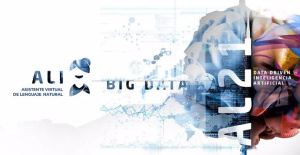 ALI, virtual assistant from Alicante, internationally recognized by the OECD
ALI, virtual assistant from Alicante, internationally recognized by the OECD Retrópolis brings the golden age of video games and computing to the UPV
Retrópolis brings the golden age of video games and computing to the UPV A million people demonstrate in France against Macron's pension reform
A million people demonstrate in France against Macron's pension reform Russia launches several missiles against "critical infrastructure" in the city of Zaporizhia
Russia launches several missiles against "critical infrastructure" in the city of Zaporizhia A "procession" remembers the dead of the Calabria shipwreck as bodies continue to wash up on the shore
A "procession" remembers the dead of the Calabria shipwreck as bodies continue to wash up on the shore Prison sentences handed down for three prominent Hong Kong pro-democracy activists
Prison sentences handed down for three prominent Hong Kong pro-democracy activists ETH continues to leave trading platforms, Ethereum balance on exchanges lowest in 3 years
ETH continues to leave trading platforms, Ethereum balance on exchanges lowest in 3 years Investors invest $450 million in Consensys, Ethereum incubator now valued at $7 billion
Investors invest $450 million in Consensys, Ethereum incubator now valued at $7 billion Alchemy Integrates Ethereum L2 Product Starknet to Enhance Web3 Scalability at a Price 100x Lower Than L1 Fees
Alchemy Integrates Ethereum L2 Product Starknet to Enhance Web3 Scalability at a Price 100x Lower Than L1 Fees Mining Report: Bitcoin's Electricity Consumption Declines by 25% in Q1 2022
Mining Report: Bitcoin's Electricity Consumption Declines by 25% in Q1 2022 Oil-to-Bitcoin Mining Firm Crusoe Energy Systems Raised $505 Million
Oil-to-Bitcoin Mining Firm Crusoe Energy Systems Raised $505 Million Microbt reveals the latest Bitcoin mining rigs -- Machines produce up to 126 TH/s with custom 5nm chip design
Microbt reveals the latest Bitcoin mining rigs -- Machines produce up to 126 TH/s with custom 5nm chip design Bitcoin's Mining Difficulty Hits a Lifetime High, With More Than 90% of BTC Supply Issued
Bitcoin's Mining Difficulty Hits a Lifetime High, With More Than 90% of BTC Supply Issued The Biggest Movers are Near, EOS, and RUNE during Friday's Selloff
The Biggest Movers are Near, EOS, and RUNE during Friday's Selloff Global Markets Spooked by a Hawkish Fed and Covid, Stocks and Crypto Gain After Musk Buys Twitter
Global Markets Spooked by a Hawkish Fed and Covid, Stocks and Crypto Gain After Musk Buys Twitter Bitso to offset carbon emissions from the Trading Platform's ERC20, ETH, and BTC Transactions
Bitso to offset carbon emissions from the Trading Platform's ERC20, ETH, and BTC Transactions Draftkings Announces 2022 College Hoops NFT Selection for March Madness
Draftkings Announces 2022 College Hoops NFT Selection for March Madness




